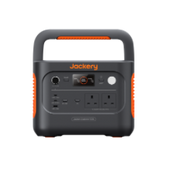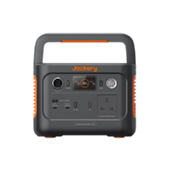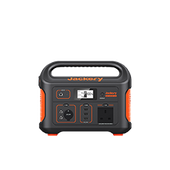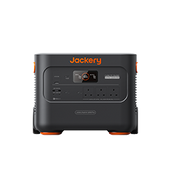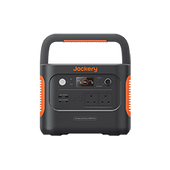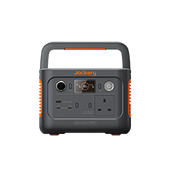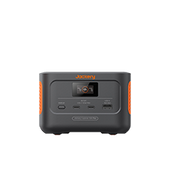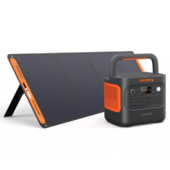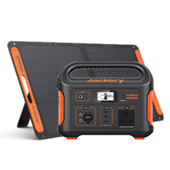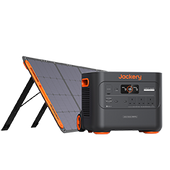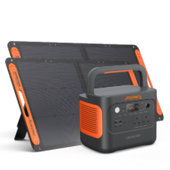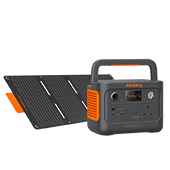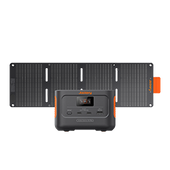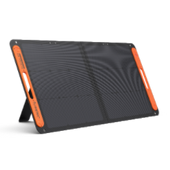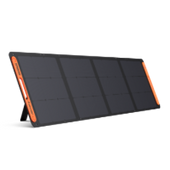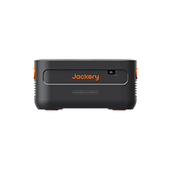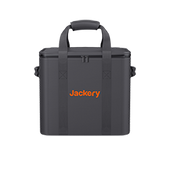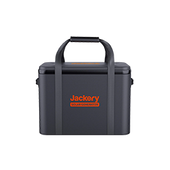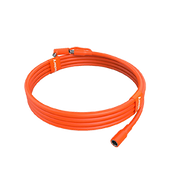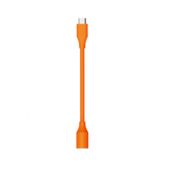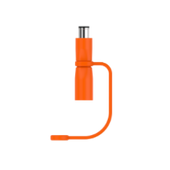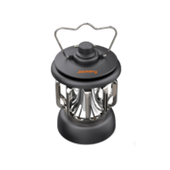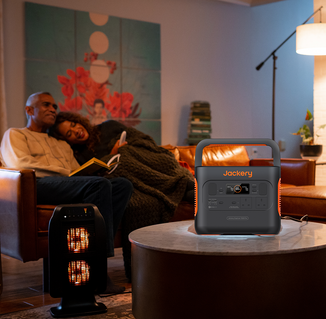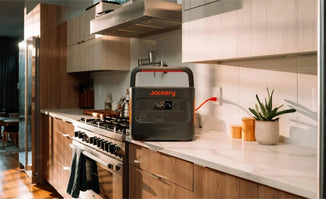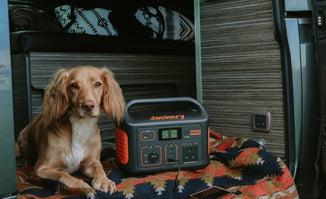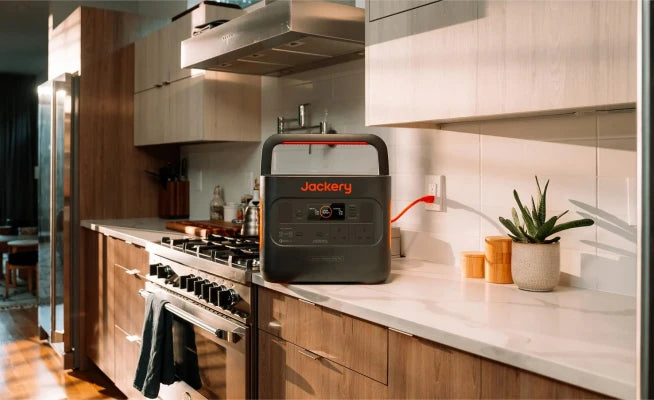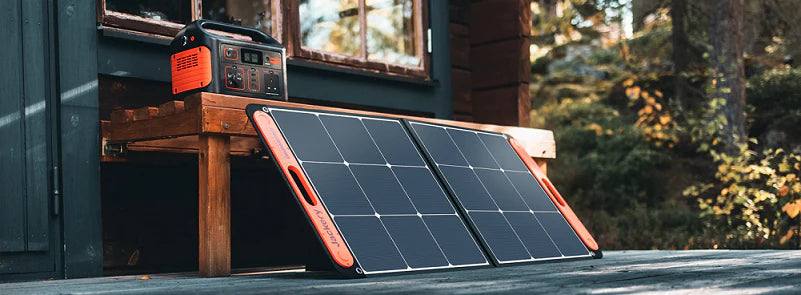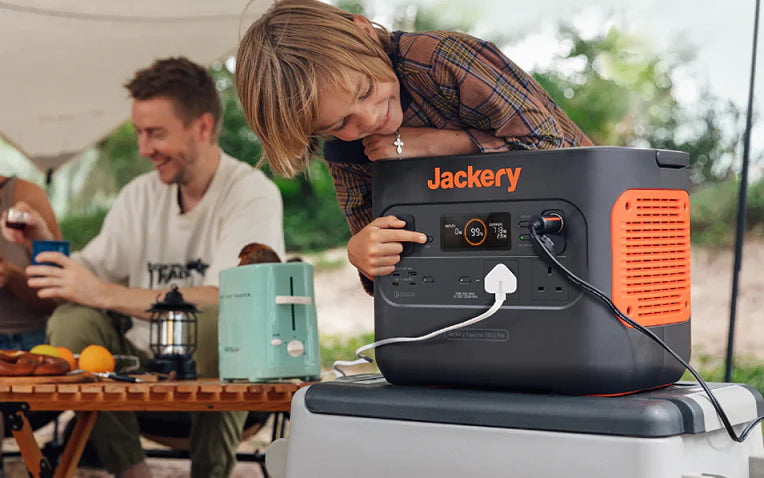Depending on how much power your electronics and appliances consume, the number of things that can be powered by an inverter with a capacity of 2000 watts is determined. Analyse your power requirements, assess your gadgets' power consumption, and rank the most critical appliances in order of importance. Keep in mind that you should monitor your power usage, adhere to safety requirements, and seek the advice of a professional when necessary.
This guide will show you everything about the 2000W inverter and its usage. When it comes to 2000W inverters, given its portability and wide range of uses, the Jackery Explorer 2000 v2 and 2000 Plus portable power stations perform a respectable job of living up to the convenience category.
|
Key Takeaways: |
|
- The physical dimensions of a 2000W inverter in the United Kingdom can differ from one manufacturer and model to another from time to time. - Typically, two batteries with a capacity of 12V 200Ah are sufficient to power the inverter, and a 2000W inverter operating at maximum power can operate for 1.2 hours. - If you are looking for an inverter with a power output of 2000 watts, there are two primary types of inverters that you are likely to encounter - pure sine wave and modified sine wave inverters. - You can use the freezer, check emails, and charge your phone with a light on with a 2000W inverter. - We highly recommend that Jackery Explorer 2000 Plus and 2000 v2 adopt the best 2000W pure sine wave inverters inside to ensure stable and consistent power supplies. |
What Is a 2000W Inverter?
A power inverter is an essential electrical system component that provides power to your campervan. In its most basic form, this device converts the direct current (DC) produced by your campervan's batteries into alternating current (AC). This change is necessary because the majority of electronic devices and appliances in your home are powered by alternating current (AC). In contrast, the electrical system in your vehicle is powered by direct current (DC).
Consider it to be a translator for the language of electricity. In the same way that a language interpreter makes it possible for people who speak various languages to communicate with one another, a power inverter makes it possible for your DC-powered car to "talk" to items that AC powers.
Size of A 2000W Inverter
The physical dimensions of a 2000W inverter in the United Kingdom can differ from one manufacturer and model to another from time to time. In the United Kingdom, the dimensions of a 2000W inverter are roughly 360 millimetres in length, 225 millimetres in width, and 100 millimetres in height on average.
On the other hand, changes may occur due to variances in design, features, and the materials required for construction. It is recommended that you examine the precise measurements of the model you are interested in purchasing to ensure that it is suitable for the space in which you intend to place it.
Battery Requirements of A 2000W Inverter
Typically, two batteries with a capacity of 12V 200Ah are sufficient to power the inverter, and a 2000W inverter operating at maximum power can operate for 1.2 hours. There is a correlation between the wattage of the inverter and the number of batteries required; more batteries are required for greater wattages. Inverters are utilised in residential and business settings to power electronic devices like televisions, refrigerators, air conditioners, and computer equipment.
A power source, an inverter controller, and an input power transformer that can handle either 288 VAC or 120 VAC are the components that make up an inverter. In normal circumstances, the inverter will use approximately 1.5 kW of power when functioning. Three factors determine the amount of power the inverter consumes: the size of the inverter, the load being supplied, and the temperature. It is common for the inverter to be able to provide roughly 85 percent of the input power.
How Many Solar Panels Do I Need for a 2000W Inverter?
Ensure you need roughly eight solar panels to power your 2000W inverter, assuming you use 250W mono-perc solar panels. You may require roughly five models if the solar panels have 415 watts to power the inverter.
What Type of Inverter Is Right for You?
If you are looking for an inverter with a power output of 2000 watts, there are two primary types of inverters that you are likely to encounter. You need to be aware of the distinctions between these two inverters and select the one that is most suitable for your needs, even though both can provide you with AC power in the event of a power loss at your residence.
Modified Sine Wave Inverters: The stepped, approximated sine wave that these inverters create is a sine wave. These are more cost-effective and can power a wide variety of standard appliances. On the other hand, they might not be appropriate for use with sensitive technological gadgets or particular medical equipment.
Pure Sine Wave Inverters: The sine wave produced by these inverters is smooth and consistent, quite similar to the power that the electrical outlets in your home produce. Despite their higher cost, they offer cleaner power, making them an excellent choice for sensitive equipment and a wider variety of technologies.
Jackery Portable Power Stations have pure sine wave inverters to ensure stable and consistent power supplies.
|
Appliances for Modified Sine Wave Inverter |
Appliances for Pure Sine Wave Inverter |
|
Water Pump |
Laptop |
|
Old CRT TV Sets |
Fridge |
|
Phone Chargers |
Microwave |
|
Kettle |
Laser Printer |
|
Water Heater |
Laser Photocopier |
|
|
Magneto-Optical Hard Drive |
|
|
Digital Clocks |
|
|
New Furnace & Pellet Stove |
How Long Can a 2000W Inverter Run?
If you are new to the concept of a 2000W inverter, it may be challenging for you to provide an answer to this issue. In the event that the inverter is only turned on on a sporadic basis, the average run duration is approximately eight hours per day, with four hours of operation and four hours of off time. However, suppose the inverter is turned on frequently; for instance, once a night, its run time will significantly decrease. In that case, it also depends on whether the power source you use is a battery or a solar photovoltaic system.
Calculating the run time of your inverter is as follows:
2000 watts / 12 volts = 166.6 DC A/h
200-amp battery / 166.6 A = 1.2 hours
If you get a 12V 200-amp battery, your inverter will run for 1.2 hours.
This is merely a theoretical estimate; the actual run duration of a 2000W inverter is affected by several factors, including the battery capacity, the kind of battery, the efficiency of the inverter, and the load being applied.

What Can You Power with a 2000W Inverter?
If you want to comprehend what a power inverter with a capacity of 2000 watts can run, it is essential to understand some concepts. Watts that are used to start and run an appliance are two separate things that are present in every appliance.
These are the most critical parameters. A better understanding of each phrase helps determine whether the inverter you selected can power your equipment in the event of a power outage. You may have observed that any device you turn on to begin functioning requires a power spike. The "starting watts" are the name given to this power.
Additionally, the device is more or less stable and requires less energy to continue operating than similar devices. I am referring to the running watts. In most cases, additional starting watts are not required for specific appliances, such as light bulbs, microwaves, toasters, and other devices that produce heat or light. On the other hand, appliances powered by motors, such as hair dryers, would typically require additional power to get started.
Here are several appliances and gadgets that can be operated with a 2000W inverter, assuming you have one:
250 watts television
150 watts for a computer or laptop
140 watts ceiling fan
1200 watts portable electric heater
1200 watts toaster
1000 watts microwave
1000 watts coffee maker
600 watts freezer
500–750 watts cooling unit
Knowing how much power you need to power your appliances simultaneously is the first step in selecting the best inverter. To make sure you choose an inverter that satisfies all of your requirements, let's divide this process into digestible phases.
Make a thorough inventory of every electrical equipment you intend to use beforehand. The following is an example list of typical wattages:
|
Electric cooktop |
1000-1800W |
|
Hair dryer |
1000-1800W |
|
Electric kettle |
1000-1500W |
|
TV |
250W |
|
Coffee maker |
1000W |
|
Freezer |
600W |
|
Microwave |
1000W |
|
LED lights |
5-20W per bulb |
|
Smartphone charger |
5-10W (higher for fast charging) |
|
Laptop |
150W |
P.S. These are approximations. Verify the precise numbers on your particular gadgets, typically in the handbook or on a sticker.
Calculate your overall power consumption using various scenarios:
At the start of the day: If you're making coffee and watching TV while having a light on.
1000W+250W+20W=1270W
At the end of the day: If you're using the freezer, checking emails, and charging your phone while having a light on.
600W+150W+10W+20W=780W
Best 2000W Portable Power Stations with Inverters
A pure sine wave inverter is highly important when integrating a solar battery into a power system, particularly for residential or sensitive applications.
Electrical noise and interference, which can impair the functionality of delicate electronic devices, are reduced by pure sine wave inverters. This is crucial for ensuring the reliable operation of audio equipment, communication systems, and other devices susceptible to electrical noise. Jackery Explorer 2000 v2 and 2000 Plus adopt the pure sine wave 2000W inverter to ensure stable power supplies and quiet operations.
The Jackery Explorer 2000 v2 Portable Power Station is a lighter, compact, and economical charging solution that can sustain the operation of most appliances for extended durations. Compared to the average of competing items, it is 41% smaller and 34% lighter.
The Jackery Explorer 2000 Plus Portable Power Station is a mobile charging device with wheels and retractable handles. It can supply power to 99% of household or outdoor devices and can be augmented from 2kWh to 12kWh with additional battery packs to accommodate the electrical requirements of various equipment.
Jackery Explorer 2000 v2 Portable Power Station
The Jackery Explorer 2000 v2 Portable Power Station is a battery-powered station with a significant capacity of 2042Wh. It provides increased power in a compact form and can charge most household or outdoor devices.
The power station is recognised as a more compact, lightweight, and economical charging solution compared to comparable items on the market. It features a collapsable handle and an ergonomic design, facilitating more straightforward transport to outdoor settings.

Weighing just 17.5kg, the Jackery Explorer 2000 v2 weighs less than other large devices, making it easier to tote along on all outdoor expeditions. It is 41% lighter and 34% more compact than standard 2kWh LiFePo4 portable power stations. Utilising the latest CTB (Cell-to-Body) technology employed in electric vehicles, it maximises space and guarantees a more secure structure, providing a more compact, stable, and safer energy source.
Recharge the Explorer 2000 v2 from 0 to 80% in about 66 minutes using AC Fast Charging, or attain a complete charge in 102 minutes utilising the Emergency Super Charging option via our application. The Silent Charging mode delivers a full charge in 5 hours at 30dB, ideal for undisturbed sleep and productivity.
The Explorer 2000 v2 portable power station offers 20ms seamless switching, ensuring the continuous operation of your vital devices throughout hurricanes, storms, and power outages. UL1778 certification for Uninterruptible Power Systems ensures dependable backup power, providing comprehensive disaster preparedness with total assurance.
The intelligent app control functionality is among the most creative attributes of the Jackery Explorer 2000 v2 portable power station. It enables convenient monitoring and management of your power consumption over WiFi or Bluetooth. The intelligent application is designed to empower users, guaranteeing a seamless and convenient power experience for everyone.
The following are the running time of using Jackery Explorer 2000 v2:
|
Appliances |
Running Time |
|
TV (60W) |
27.2H |
|
Refrigerator (400W) |
4.1H |
|
Coffee Maker (550W) |
3H |
|
Oven (850W) |
1.9H |
|
Kettle (1600W) |
1.1H |
|
Power Tool (900W) |
1.9H |
(*The working hours are only for reference; the actual working hours depend on your usage.)
Jackery Explorer 2000 Plus Portable Power Station
With a pure sine wave inverter, the Jackery 2000 Plus is a versatile, high-capacity charging solution designed to charge various home or outdoor appliances whenever and wherever required. It is the ideal emergency home backup solution, offering high output to charge essential appliances such as lights and medical equipment like CPAP machines and refrigerators. Its robust and ergonomic design ensures your appliances stay powered up wherever you go.
You can increase the Jackery Explorer 2000 Plus's capacity if its 2kWh is insufficient. Each Explorer 2000 Plus can have up to five battery packs added to it, increasing the total power to 12 kWh. Although the Jackery Explorer 2000 Plus is a portable power station, it stands out from the competition despite being a practical device.

The Jackery 2000 Plus can run a variety of heavy load devices with a 3,000 W capacity, such as air conditioners, RVs, and more, meeting all of your power needs with its enormous 2042.8 Wh capacity. Up to five extendable battery packs are supported by the Jackery Explorer 2000 Plus, which has power expanded from 2,000 to 12kWh—voltage to 240V and output to 6000W—to meet all of your power needs both indoors and out.
Charge directly from the sun or via a wall outlet conveniently, quickly, and worry-free. It took only 2 hours for the Explorer 2000 Plus to fully charge by connecting 6*SolarSaga 200W Solar Panels or via a wall outlet. Additionally, there's no longer a need to worry about power outages—enjoy your time off-grid.
Easily manage your Explorer 2000 Plus using WiFi or Bluetooth. Using the other App features and monitoring the battery's remaining levels is now simpler than before. Multiple advanced settings can be customised to meet individual requirements, ensuring round-the-clock energy control.
The Jackery Explorer 2000 Plus is highly temperature resistant, adopting advanced lithium technology to ensure cells operate efficiently and safely. The built-in cooling system further improves heat dissipation efficiency by 30%, and different types of protection, including shock and fire resistance, provide a complete, safe charging experience.
The following are the running time of using Jackery Explorer 2000 Plus:
|
Appliances |
Running Time |
|
TV (60W) |
27.2-160H |
|
Refrigerator (400W) |
4.1-24H |
|
Coffee Maker (550W) |
3-17.5H |
|
Oven (850W) |
1.9-11.3H |
|
Kettle (1600W) |
1.1-6H |
|
Power Tool (900W) |
1.9-10.7H |
(*The working hours are only for reference; the actual working hours depend on your usage.)
The Advantages of 2000W Inverter vs 1000W Inverter
The capacity of a 1000W inverter can be doubled with a 2000W inverter. Since the majority of portable gas-powered generators on the market can provide electricity between 2000 and 4000 watts, these inverters can be used for almost any kind of task.

High Initial Power: The ability of a 2000W inverter to provide substantial initial watts is one of the main reasons people could select it for their do-it-yourself solar applications. The power needed to start many appliances will differ significantly from that required for continuous operation. Even though they often don't use quite that much when operating continually, their starting wattage requirements might reach far over 1000 watts.
High Continuous Power Output: An inverter with a 2000W capacity can produce 2000W of power continuously, with a maximum power output of 4000W.
Several Output Interfaces: These are typically outfitted with various AC outlets and USB interfaces, making it easy to connect several different devices.
High Conversion Efficiency: With an average efficiency of 85% to 95%, energy waste is decreased, and consumption efficiency is increased.
Full Protection Features: To guarantee the safety of both the equipment and the people who use it, it is equipped with several different safety protection functions, including overload protection, overheating protection, short circuit protection, low voltage protection, and so on.
Superior Heat-Dissipation Apparatus: The inverter is fitted with heat sinks and fans to keep a consistent temperature during its operation over an extended period and to discourage it from overheating.
Waveform of the Output: It is suitable for devices sensitive to current since it produces a pure sine wave output. Any single device, including deep freezers and microwaves, can be powered by a 2000W inverter. Although a 2000W inverter would not power a whole house, it is most likely more than sufficient for any off-grid or travel applications.
How to Choose a 2000W Inverter?
To choose the best 2000W inverter in the UK, you must consider several important aspects to ensure it will function securely and effectively and satisfy your unique power requirements. Here are some of the factors to consider:

Power Requirements: Determine the total continuous wattage of the devices that you intend to power and take into account any surge power requirements that may be necessary for starting up the devices. Check that the inverter can manage both the continuous load and any peak surges that may occur.
For example, if you have an inverter with a rating of 2000 watts, the inverter can deliver a continuous output of up to 2000 watts of alternating current power. On the other hand, the load must not go beyond this limitation. If the rated power capacity of the inverter is exceeded for a lengthy period, the inverter may overheat, shut down, or sustain damage. For this reason, selecting an inverter with a suitable rated power capacity is crucial to guarantee that your electrical equipment will run dependably and securely.
Waveform: Inverters that use pure sine waves produce clean and steady power, making them acceptable for use with sensitive electronic devices and appliances that use AC motors. It is possible that modified sine wave inverters are not compatible with all devices, even though they are often less expensive. A pure sine wave inverter is advised since it offers the best possible performance and versatility.
Input and Output Voltage: The inverter's input voltage should be the same as your battery system's voltage. Typically, 12V DC 230-240V AC is the standard voltage for mains electricity in the United Kingdom; check that the inverter gives this output so that it may be used with your appliances.
UPS Function: UPS is an acronym for uninterrupted power supply. Certain inverters, like Renogy inverters, have a UPS capability to be powered by both mains 230v and 12-volt power. If the primary power source is cut off or lost, the UPS feature immediately changes to the backup power source.
For example, until a 230-volt hook-up is connected, a UPS inverter can operate on your recreational batteries. It will run off the mains after the mains hook-up is connected. The inverter will instantly return to battery power if the mains hook-up fails or is disconnected. Because of its lightning-fast switch time, the UPS is beneficial for computers, laptops, and delicate electronic devices that need constant power.
Efficiency and No-Load Consumption: More DC electricity is converted into usable AC power by inverters with higher efficiency, resulting in less energy wasted. Inverters with a low idle power consumption should be considered to preserve the battery's life when no devices are connected.
Safety Features: It is important to look for inverters with safeguards against over-voltage, under-voltage, overloads, short circuits, and overheating to ensure they are safe to use. Adhering to the installation requirements and safety considerations is essential when utilising an inverter with a power output of 2000 watts.
2000W Inverters FAQs
The following are the frequently asked questions about the 2000W inverters in the UK.
1. What can I run on a 2000W inverter?
Numerous electronic gadgets and home appliances can be powered by a 2000-watt inverter as long as their total power usage stays within the inverter's capabilities. Microwaves (about 1000W), coffee makers (1000W), toasters (1200W), refrigerators (750W), freezers (600W), televisions (250W), and PCs (150W) are typical items that work well with a 2000W inverter.
It's crucial to remember that appliances like freezers and refrigerators with electric motors or compressors may need a larger surge power at the beginning, occasionally up to 1200–1500W. In order to avoid overloading, make sure that the combined operating wattage of all connected devices—including starting surges—remains within the 2000W inverter's continuous output capacity.
2. How big of a battery do I need to run a 2000W inverter?
A 2000W power inverter needs at least 8-9 12V 100Ah batteries to run continuously for 4 hours. When using a 24V battery pack, the number of batteries is reduced; however, the system's total needs and load must still be considered when configuring.
3. How long will a 100Ah battery last with a 2000W inverter?
Analyse the viability of using a 100Ah lithium battery with a 2000W inverter. According to this theoretical computation, the battery can power the inverter for roughly 36 minutes or 0.6 hours.
4. How many solar panels for a 2000W inverter?
Although the amount of solar panels for a 2000-watt inverter depends on the wattage of each panel, a balanced system should include between 6 to 8 panels.
5. Can a 2000W inverter run a fridge?
Generally speaking, a refrigerator with a 2,000W inverter can function smoothly. Your inverter must handle both the steady wattage and the brief burst in power. Though the surge wattage can be roughly two to three times higher, most refrigerators need between 300 and 600 watts of power.
Final Thoughts
With its ability to convert energy into something logically usable, the 2000W inverter serves as a robust and reliable energy source for everyone, meeting their various energy demands, such as powering home appliances or enabling individuals to live off the grid. If you are searching for dependable and efficient solutions that will allow mobility, Jackery's products are from highly reputable companies and come with new features and proven resistance to faults. Choose the best power source from the range of Jackery portable power stations.



